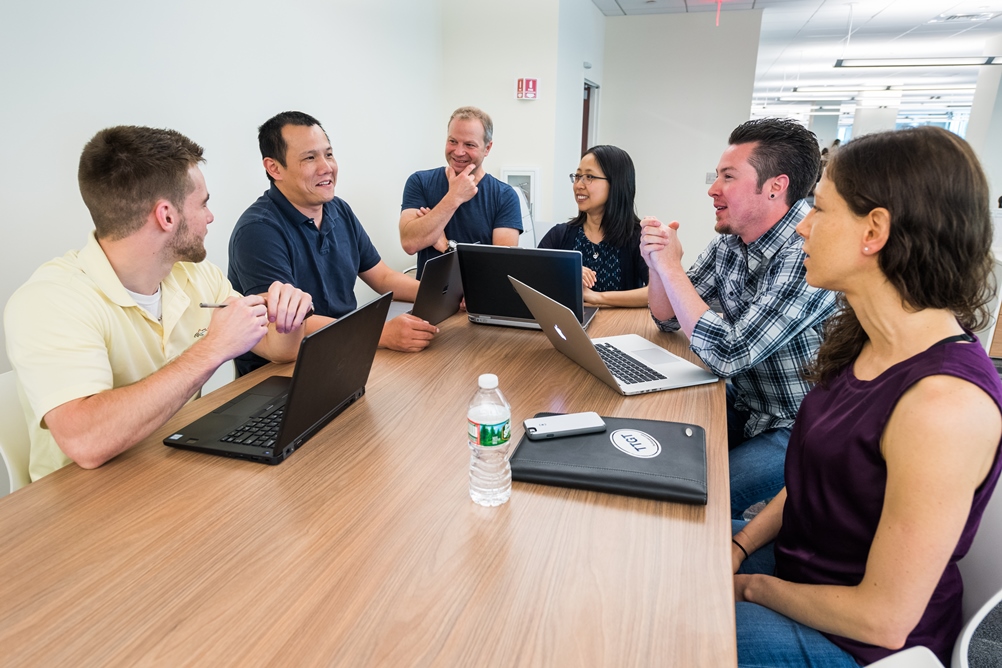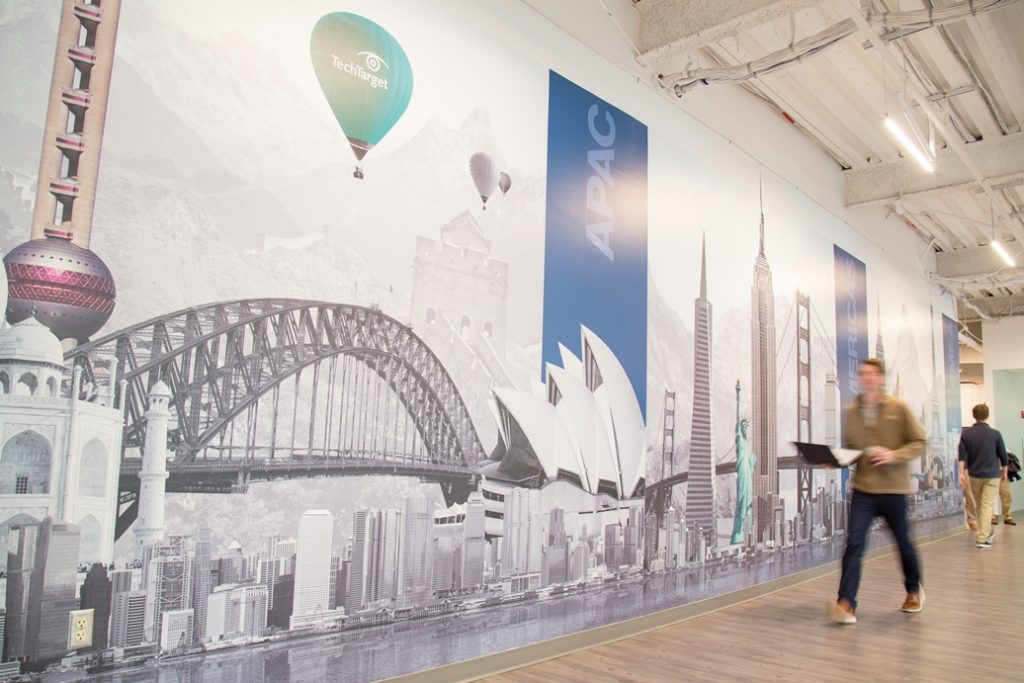Mike Cotoia talks about how young sales professionals should train themselves to master MarTech and Adtech skills
Know My Team
Tell us about your role at TechTarget. How did you come to lead the company from a Sales background?
I’ve been CEO here at TechTarget since 2016. However, I’ve been at the company for more time… almost sixteen years. I view my role as having three major components. These are:
I need to be focused on our customers and their needs at all times.
I want to be the enabler-in-chief of the team here.
And as a team, I want us to all deliver on the promises we make to our stakeholders.
Coming from sales has been invaluable because you get to understand your client’s opportunities, goals, and challenges they are working through every month, quarter, and year. Having a solid understanding of what can make your customers successful and applying that recipe(s) to our business model is very effective.
How do you manage to stay on top of your game in this tech-heavy industry?
I’m fortunate in that I learn every day from two directions. As I noted, I spend a lot of time every week with customers and that is something that I hope to never relinquish. And here at TechTarget, we have 175 editors who keep their ears to the ground on everything that’s happening in the Enterprise Tech markets.
A Beginners Guide to Positioning a Strong Online Brand…

How tech-savvy are your marketing, sales and branding teams? How do you rate them on a scale of 1-10?
We haven’t gotten where we’ve gotten by resting on our laurels. It’s fair to say that very few at TechTarget are ever fully satisfied that they’ve cracked every code. But that said, we’ve got amazing teams. I’d rate them at an 11! And then look to them to do even better.
What is the most powerful advice you have received on achieving Sales Mastery? How do you improvise on that advice?
During my first sales job, the CEO of the company said, “God gave you two ears and one mouth, so listen twice as much as you speak.”
It’s important that you build a bond with your customers and listen deeply to what they are saying. You might not always like what you hear but transparency and understanding what really makes your customer successful will only benefit both sides.
And they will tell you if let them! I try to continue to improve on this lesson every week because I know I haven’t mastered it.
We do a lot of role-playing and practice selling within TechTarget and our teams do a great job of prepping reps across all experience levels. I know a lot of people outside of sales might think sales is solely about personality and relationships. Yes, that’s a huge part of it but it is also about work ethic, preparation, understanding your client’s needs, and how to position the right solutions to your clients that will drive success. It’s the only job I can think of where you might get 50 “Nos” before you get a “Yes”. You can’t take things personally. You need to learn, apply, and power through it.
Content is The “Lion Factor” in Succeeding with ABM and Person …

How do you think young sales professionals should train themselves to master MarTech and Adtech skills?
Teachers, doctors, athletes, musicians, and mechanics all need the training to become the best in their field. Sales professionals need training, which takes discipline, but a lot of the training tools are right in front of them. Research your clients, research your market, understand how to better reference-sell, work with your product team to understand the right positioning of your solutions, train through role-playing and, most importantly, ask for feedback. You must also get out of your comfort zone because that will open up a whole new set of capabilities. Lastly, dive in and learn from your mistakes and your successes during your sales calls.
How do you collaborate with CEOs and CMOs in the industry, to manage the full-funnel customer experience?
CEOs and CMOs come to us for a few essential reasons. They need help understanding their markets They need help identifying and accessing more demand. They need to scale up their marketing and sales performance. So we provide help with inputs, outputs and outcomes. Our inputs help them directly with their work on customer experience because when you understand better you can anticipate and respond better. Our outputs and outcomes give them more freedom to pay attention to other parts of their business that require a different focus.

What are the biggest challenges to meeting revenue targets and goals? Why do sales teams continue to lag in their revenue targets?
To be honest, our sales teams have not been lagging in hitting their revenue targets in recent memory, but if I take the question outside of that context, it really is about what you can do to truly impact your customer’s business. Our customers have one common goal and that is to accelerate pipeline and revenue opportunities with new accounts as well as within existing accounts. If you can’t make the time to understand how your solution can solve a real customer need and help them reach their ultimate goal, you’re going to have a hard time generating productive sales conversations.
From a tactical standpoint, how often does your organization revisit the content technology and sales automation stack?
As a tech innovator ourselves, we have a culture of continuous product improvement. So if you take that “always be shipping” mentality into the guts of our own company, you can understand how we’re either always evaluating a technology or we’re tuning and tweaking what we have to get more out of it. At the same time, I’d say we’re pretty conservative about assessing what we really need so we’ve avoided the trap of trying to use technology as the driver of change. We like to try to model the change we want and when we see it pay off, we’ll consider adding to our stack to build scale and take more cost out of the equation.

How does the technology involved impact your customer building/partnership model?
That’s pretty simple. We add technology to deliver better outcomes for our customers. We add technology or build it so that we can deliver more cost-effectively to them, in the areas where tech helps. Where human beings make the difference, tech helps us free them up to deliver more value to their clients.
How do you see the technology you use impact the customer acquisition and success rate?
We’re doing quite a bit in both areas, on the outbound and inbound sides, and as well, from the fulfillment and customer success angles. We have evolved quite a bit over the past several years as a company leveraging technology for customer acquisition and success rate metrics. It’s critical to have the right output goals identified and the technology and goals are only as good as the data inputs we add into the systems.

Do you see sales and marketing technologies unifying or evolving together to deliver higher ROI to businesses?
Absolutely. I think they have to or there will just be a lot of confusion and complexity without measurable results.
In a heavily tech-loaded ecosystem, how do you enable companies to create meaningful business opportunities?
As you know, our model is built on our publishing foundation where we create tons of original, hyper-granular editorial content every year. We built this business by supplying the information enterprise tech buyers hunger for to help them address their business issues and make better buying decisions. The whole concept – our engine – runs on understanding buyer needs. So we help our tech clients understand what to do based on what their market and their prospects are actually thinking about, how they are going about trying to solve real issues in their businesses. When you orient around solving business needs from the customer’s perspective, you’re able to maximize your capture of existing opportunity and you can even do the work to manufacture opportunity before others have a chance to get in on a deal.
How do you identify with the ‘generation gap’ among the various advertising platforms?
We don’t really think in terms of age as part of how we understand our audience. We think of serving the needs of the audience in terms of how they prefer to ingest information: they’re preferred channels, formats, the construction of the articles themselves, etc. The key thing to remember is that the enterprise tech industry keeps getting deeper and broader. By that, I mean that people are applying tech to entirely new categories, and in parallel, they’re re-inventing existing ones. And this manifests itself as increasing specialization. So the key thing for us is to stay abreast and slightly ahead of markets such that we can address both the “fat head” of where the bulk of the market is and the long tail of where it’s going. Things like age-related demographics are a somewhat interesting overlay on that, but not the key element. Now, since this technology is pretty deep stuff, the formats and channels we need to deliver in are a bit different from what you’d see on the consumer side. We need to be able to communicate a lot of detail because that’s what our audience wants. Contrast this with super short video on mobile, for example, and you can begin to envision why tech progress is really the driver more than demographics. Generally speaking, people consume our content to help in their work and their profession. We need to make the experience as helpful as we can.
How often do you measure the performance of your marketing analytics and sales reporting?
I would say we are rapidly evolving in this area and have made some significant investments. Our approach is to build, deliver, measure, and modify based on what is working and what is not working. If we see something that is working we will mobilize very quickly in order to scale success. If there is something that isn’t driving measurable ROI we stop it quickly.

What are the dynamic elements driving your B2B customer engagement model? How do you execute your Engagement Economy vision, and your Strategy, Product and Corporate Development?
The Engagement Economy is real, but it’s not just about screens. It’s also about both the functionality in the product for ease of use and the experience we deliver around growing marketing competency aided by our partnership with our clients. We spend a ton of time working with our clients on their marketing, sales and business challenges, at all levels of their companies. As I mentioned, our editors have their fingers on the pulse of their respective segments. Our publishers provide strategic guidance to tech vendors. Our client consulting, client services, and customer success professionals, support and coach clients in their evolution. On the product side, our belief is that better data sits at the core of business success, so it begins there. Then our strategy is all about helping clients get the most they can out of what we deliver to them. So it’s about supporting the highest-value use cases, making things repeatable and scalable and then providing the guidance they need, the visibility, to inspire their own innovative actions. We come at corporate development from the same angle. Our first thought is: what can we do to give our clients even more leverage on the investments they’re already making?
Could you provide us a sneak peek into your MarTech acceleration strategies?
Over the past two years really, we’ve been building up a wealth of learning from our 600 clients who are directly accessing our real purchase intent data. Within those clients, we’ve got thousands of users in the system every day. We also have an active program of user group events around the world. So this has enabled us to focus things like our onboarding processes as clients first get engaged with real purchase intent insight. That accelerates value realization right from the start. We have also been focusing a lot of energy on making sure that our data seamlessly fits within our customers’ workflow as well as visualization to better help them understand success across their core marketing initiatives. On top of that, we’ve been building out a robust set of documentation and learning aids – an evolution program — that is helping clients get better and better at marketing and sales more programmatically.
What is that one piece of advice you received that you would like to pass on to the MarTech industry?
Stay focused on delivering value and transparency to the customer.
Thank You, Mike, for answering all our questions. We hope to see you again at MTS, soon.











